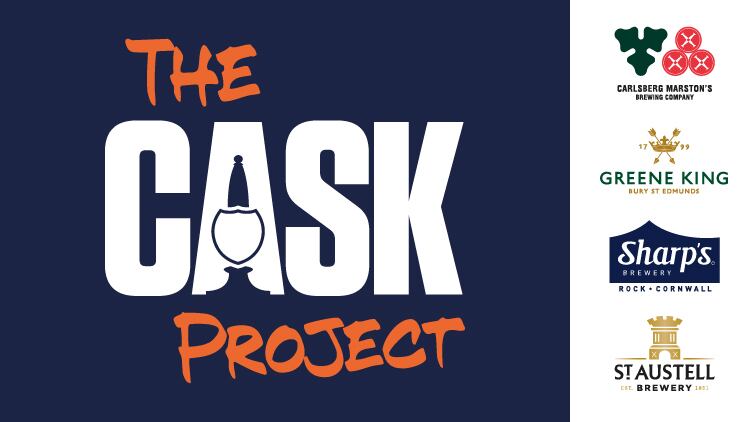The Cask Project
The Morning Advertiser launched The Cask Project in a bid to re-energise the category and reinstall it in pride of place on the bar of pubs throughout the country.
Cask beer is in long-time decline and, having joined forces with some of the UK’s leading cask beer suppliers – Carlsberg Marston’s Brewing Company, Greene King, Sharp’s Brewery and St Austell – we want to reinvigorate attitudes within the trade to a product which should be rightly cherished by operators.
Cask beer is a unique product that can only be replicated successfully within pubs but the perception of cask, particularly among younger drinkers, is that it is made and loved only by an ageing male population.
We want to create a real buzz about cask to get pub owners, operators, general managers, bartenders and all pub staff on board and debunk the myths surrounding the drink and educate them on how to make cask work for their business. And by doing this, we can pass on that knowledge, care and skill into cask beer at the bar for customers to get excited about too.
CGA’s analysis, which looked at beer categories such as premium lager, standard lager and cask ale within pubs for the past two years (pre-pandemic), found volumes sales for cask have dropped from 1,767,109 hectolitres (hl) two years ago to 1,111,430hl this year – a drop of 37.1% – while total lager volumes only fell 25% in the same period.
A similar story has emerged in value sales with a fall for cask from £1.1bn two years ago to £728m this year (33.8%) while total lager’s fall from £5.80bn to £4.58bn represented a 20.9% decline.
Number of outlets falling
Although the number of outlets stocking the different types of drinks has fallen across the board from pre-pandemic times to now, the numbers selling cask ale has fallen more than any other. Some 30,283 pubs that were stocking cask is now down to 24,160, which is a 20.2% drop.
In terms of share of the total beer market in UK pubs, cask ale has fallen by 1.9% from pre-pandemic percentage to this year in volume and by 1.8% in value. Although standard lager has suffered more (down 4% and 4.3% respectively), premium lager has risen by 6.1% in volume and 6.4% in value – proving customers are willing to pay more for a pint.
Two major factors
CGA client manager Matt Meek said: “The Cask Ale category has been in decline for a number of years now and there are two important reasons why.
“A typical cask ale firkin contains 72 pints and has a shelf life of around three to four days, meaning 18 to 24 pints need to be sold a day in order to ensure quality, which can be difficult for smaller outlets. This will ultimately lead to waste and a loss in profit. Many outlets have had reduce the number of cask ale brands on the bar as a result.
“Consumers may be put off the category if they have a ‘poor quality’ pint of cask ale, and then opt for another category such as lager where you have more confidence in quality.”
All statistics taken from CGA OPMS Data to P02 (26.02.2022)




